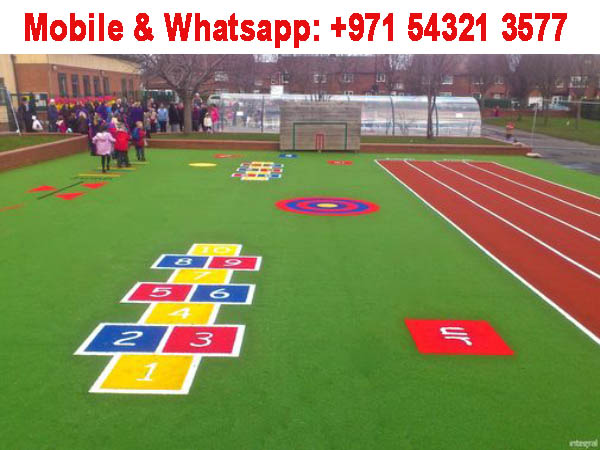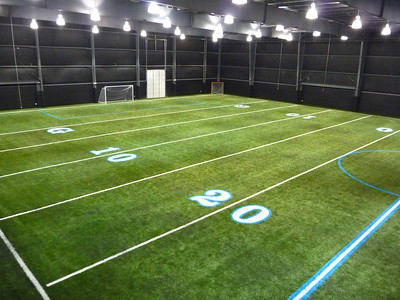Artificial grass has become a popular choice for athletic fields in recent years due to its many benefits. Not only does it provide a consistent and reliable playing surface, but it is also highly durable and requires less maintenance than natural grass. In this article, we will explore the benefits of artificial grass for athletic fields and discuss the factors to consider when choosing an artificial grass product for your sports facility. athletic turf for sale
What is artificial grass for athletic fields?
Answer: Artificial grass for athletic fields is a synthetic turf material designed specifically for high-performance sports activities. It is made from a combination of materials such as nylon, polyethylene, or polypropylene and is designed to look and feel like real grass while providing superior durability and performance.

Why is artificial grass a popular choice for athletic fields?
Answer: Artificial grass has become a popular choice for athletic fields for several reasons. Firstly, it provides a consistent and level playing surface that is essential for high-performance sports activities. Unlike natural grass, which can become uneven and patchy over time, artificial grass maintains its shape and texture, ensuring a safe and predictable playing surface.
Secondly, artificial grass is extremely durable and can withstand heavy foot traffic, harsh weather conditions, and exposure to sports equipment. This makes it a long-term investment for sports facilities, as it requires minimal maintenance and can last for many years.
Finally, artificial grass is also a cost-effective option for sports facilities. While the initial installation costs may be higher than natural grass, the long-term cost savings in terms of maintenance and replacement make it a more affordable and sustainable choice in the long run.
What are the different types of artificial grass for athletic fields?
Answer : There are several different types of artificial grass for athletic fields, each with its own unique characteristics and benefits. Some of the most common types of artificial grass for athletic fields include:
- Infill artificial grass: This type of artificial grass is filled with sand or rubber granules, which help to provide cushioning and shock absorption.
- Non-infill artificial grass: This type of artificial grass does not require any infill material and is designed to be used without any additional cushioning.
- Hybrid grass: This type of artificial grass combines natural grass and synthetic turf to create a playing surface that is both durable and aesthetically pleasing.
- Duraspine: This type of artificial grass is specifically designed for use in sports activities and is extremely durable and long-lasting.
What are the benefits of using artificial grass for athletic fields?
Answer: There are several benefits to using artificial grass for athletic fields.
- Consistent and reliable playing surface: Unlike natural grass, which can become uneven and worn down over time, artificial grass provides a consistent and reliable playing surface. This is particularly important for sports such as soccer, football, and lacrosse, where a level and uniform playing surface is essential for player safety and performance.
- Durable and long-lasting: Artificial grass is highly durable and can withstand heavy use and foot traffic without becoming damaged or worn down. This makes it an ideal choice for athletic fields, where the playing surface must be able to withstand frequent use and abuse.
- Low maintenance: Artificial grass requires significantly less maintenance than natural grass. It does not need to be watered, mowed, or fertilized, and it is not susceptible to pests and diseases. This can result in significant cost savings over time, as well as reduced environmental impact.
- Water-saving: Natural grass requires large amounts of water to stay healthy and green, particularly in arid regions. Artificial grass, on the other hand, requires no watering, which can result in significant water savings for sports facilities.
- Versatile: Artificial grass can be used for a variety of sports and activities, from soccer and football to golf and tennis. This makes it a versatile solution for sports facilities looking to create a multi-use playing surface.
How is artificial grass for athletic fields installed?
Answer: Artificial grass for athletic fields is typically installed over a base layer of crushed stone or gravel. This helps to provide drainage and stability for the artificial grass.
- Site preparation: Before installation, the site needs to be properly prepared. This may involve removing any existing grass or vegetation, leveling the ground, and ensuring proper drainage.
- Base installation: A base layer of crushed stone or gravel is installed to provide drainage and stability for the artificial grass.
- Weed barrier: A weed barrier may be installed on top of the base layer to prevent weed growth.
- Artificial grass installation: The artificial grass is then laid over the base layer and trimmed to fit the field dimensions. The seams are joined together using specialized adhesive or seaming tape.
- Infill installation: For infill artificial grass, sand or rubber granules are spread over the surface of the artificial grass to provide cushioning and shock absorption. football turf vs grass
- Final touches: Once the artificial grass is installed, any necessary markings and logos are added to the field. The field is then inspected and any necessary adjustments or repairs are made.
It is important to note that the installation process may vary depending on the specific type of artificial grass and the requirements of the sports facility.
It is recommended to work with a professional installation team to ensure that the artificial grass is installed correctly and to the highest standards.
What are the maintenance requirements for artificial grass for athletic fields?
Artificial grass for athletic fields is relatively low-maintenance compared to natural grass. It does not require mowing, watering, or fertilizing, which can save sports facilities time and money on maintenance costs.
However, artificial grass does require some maintenance to ensure that it remains in good condition. This includes regular brushing to keep the fibers upright and prevent matting, as well as occasional spot cleaning to remove any stains or debris.
Additionally, infill artificial grass may require periodic top-up of the infill material to maintain proper cushioning and shock absorption. artificial football field playing surface codycross
What factors should be considered when choosing an artificial grass product for an athletic field?
Answer: artificial turf
Quality and durability: The quality and durability of the artificial grass product are essential considerations when choosing a product for an athletic field. Look for products that are designed specifically for athletic fields, with a high pile height, strong backing, and a dense, uniform appearance.
Infill options: Infill is an important component of many artificial grass products, providing cushioning and shock absorption for players. There are several types of infill available, including sand, rubber, and organic infill. Each type of infill has its own benefits and drawbacks, so it is important to choose the right infill for your specific needs.
Drainage: Proper drainage is essential for an athletic field, particularly in areas that receive a lot of rainfall. Look for artificial grass products with effective drainage systems to prevent water from pooling on the surface of the field.
UV resistance: The intense sunlight and heat of the summer months can cause artificial grass to fade and degrade over time. Look for products with UV resistance to ensure that the artificial grass stays looking great for years to come.
Cost: Cost is always an important consideration when choosing any product for a sports facility. While artificial grass may have a higher upfront cost than natural grass, it can result in significant cost savings over time due to reduced maintenance requirements and improved durability.
Indoor sports turf, also known as synthetic turf or artificial turf, is a popular choice for indoor sports facilities. It is a surface made from synthetic fibers that mimic the look and feel of natural grass. sports turf is designed to be durable, long-lasting, and provide a safe playing surface for a variety of sports.
Conclusion
Artificial grass has become a popular choice for athletic fields due to its many benefits, including a consistent and reliable playing surface, high durability, low maintenance requirements, water-saving properties, and versatility. When choosing an artificial grass product for an athletic field, it is important to consider factors such as quality and durability, infill options, drainage, UV resistance, and cost. By choosing the right artificial grass product, sports facilities can create a high-performance and durable playing surface that meets the needs of athletes and sports enthusiasts.

